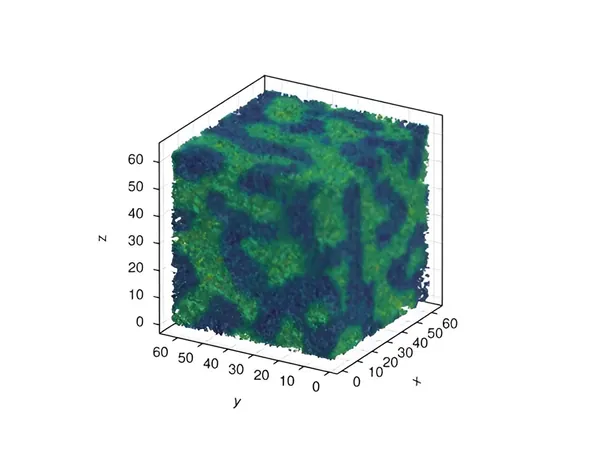
Groundbreaking Research Paves the Way to Unravel the Mysteries of Quark-Gluon Fluids
2024-09-24
Author: John Tan
Introduction
In an exciting development that could reshape our understanding of particle physics, scientists are actively exploring the intriguing possibility of a critical point within the Quantum Chromodynamics (QCD) phase diagram. QCD is the fundamental theory that explains how the strong force binds quarks and antiquarks into protons, neutrons, and a variety of other particles collectively referred to as hadrons.
The Critical Point in QCD
Much like the crucial transition point between liquid and gas in everyday water, the critical point in QCD signifies a transformative phase change in matter where quarks and gluons coexist as a plasma before becoming confined within hadrons. Researchers eagerly anticipate the opportunity to observe distinctive signatures indicating this critical point, particularly changes in the number of particles produced during collisions in advanced particle accelerators.
Recent Advancements in Research
Recent advancements were highlighted in a study published in the esteemed journal *Physical Review Letters*. Here, scientists introduced a novel algorithm designed for simulating critical fluids, a crucial step in refining our understanding of how quantum fluids behave under extreme conditions. This simulation effort marks a significant leap, as witnessing critical fluctuations during heavy ion collisions could provide the first tangible evidence of a phase transition between quark-gluon plasma and hadronic matter—the latter being a state where quarks and gluons form into hadrons.
Theoretical Approaches and Fluid Dynamics
However, interpreting the outcomes of related experiments demands innovative theoretical approaches. A robust fluid dynamic framework is necessary, one that adeptly accommodates the vital fluctuations—how pressure, velocity, and other parameters adjust in fluids under varying conditions.
The Beam Energy Scan Program
This research is not just theoretical; it's a pivotal contribution aimed at enhancing our comprehension of quark-gluon matter. As part of their roadmap, the Beam Energy Scan (BES) program at the Relativistic Heavy Ion Collider (RHIC)—a cutting-edge facility operated by the Department of Energy at Brookhaven National Laboratory—is meticulously examining the energy dependence of particle fluctuations in heavy ion collisions. The primary goal? To detect a potential critical point linked to the transition to quark-gluon plasma.
Challenges in Data Interpretation
The complexity of this endeavor cannot be understated. Accurately interpreting data generated from the BES program requires a sophisticated understanding of fluid dynamics, specifically how variables such as baryon density, entropy density, and fluid velocity fluctuate.
Next Steps and Future Directions
The researchers have successfully built and tested a fluid dynamic framework for a static fluid positioned near the predicted critical point. Their next phase involves connecting these results to the dynamics of the fiery explosion triggered by heavy ion collisions. This link could either help pinpoint the critical point or establish parameters that constrain its possible location.
Conclusion
As we stand on the brink of a potentially revolutionary breakthrough in particle physics, this research not only deepens our grasp of the universe's most fundamental building blocks but may also redefine our understanding of matter itself. Stay tuned as scientists strive to unlock the secrets of quark-gluon fluids—an exploration that may change the trajectory of physics as we know it!






 Brasil (PT)
Brasil (PT)
 Canada (EN)
Canada (EN)
 Chile (ES)
Chile (ES)
 Česko (CS)
Česko (CS)
 대한민국 (KO)
대한민국 (KO)
 España (ES)
España (ES)
 France (FR)
France (FR)
 Hong Kong (EN)
Hong Kong (EN)
 Italia (IT)
Italia (IT)
 日本 (JA)
日本 (JA)
 Magyarország (HU)
Magyarország (HU)
 Norge (NO)
Norge (NO)
 Polska (PL)
Polska (PL)
 Schweiz (DE)
Schweiz (DE)
 Singapore (EN)
Singapore (EN)
 Sverige (SV)
Sverige (SV)
 Suomi (FI)
Suomi (FI)
 Türkiye (TR)
Türkiye (TR)
 الإمارات العربية المتحدة (AR)
الإمارات العربية المتحدة (AR)